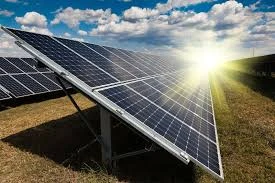semi flexible solar panel
Exploring Semi-Flexible Solar Panels A Breakthrough in Renewable Energy
In the quest for sustainable energy solutions, solar panels have emerged as a leading contestant in the realm of renewable energy. However, traditional rigid solar panels often come with limitations in terms of installation and versatility. This is where semi-flexible solar panels step in, revolutionizing the way we harness solar energy.
What Are Semi-Flexible Solar Panels?
Semi-flexible solar panels are an innovative alternative to conventional rigid solar panels. These panels are typically made from thin-film solar cells that are laminated onto a flexible substrate. Unlike their traditional counterparts, which are heavy and cumbersome, semi-flexible solar panels are lightweight and can be bent to a certain degree without losing their efficiency. This unique property makes them ideal for a variety of applications where standard panels would be impractical.
Advantages of Semi-Flexible Solar Panels
One of the most significant advantages of semi-flexible solar panels is their versatility. Due to their lightweight and adaptable nature, these panels can be mounted on various surfaces, including curved roofs, tents, RVs, and boats. This capability allows for increased options in energy generation in locations that are otherwise difficult to access with traditional solar technology.
Furthermore, semi-flexible panels can be manufactured in various shapes and sizes, making them customizable for a wide range of uses. This customization enables them to fit into unconventional spaces and to be integrated seamlessly into existing structures without aesthetic compromise.
Another essential aspect is their durability. Although they might be less sturdy than rigid panels in terms of impact resistance, semi-flexible solar panels are designed to withstand various weather conditions. They can endure substantial vibrations, which is particularly valuable in mobile applications like vehicles and marine environments.
Efficiency and Performance
The efficiency of semi-flexible solar panels has significantly evolved with advancements in technology. While they may not always match the performance of high-end, rigid solar panels, they have become more efficient in converting sunlight into electricity. Many brands now offer semi-flexible panels with efficiencies nearing 20%, making them a reliable option for many applications.
semi flexible solar panel

Moreover, these panels often perform better in low-light conditions, allowing for energy generation on cloudy days or in shaded areas, which can be particularly advantageous for urban environments where sunlight may not be as abundant.
Applications
The application of semi-flexible solar panels is varied and expanding. They are particularly popular in the recreational vehicle (RV) and marine sectors, where their lightweight nature and ability to contour to surfaces are beneficial. Additionally, they are used in off-grid installations, portable power sources, and in emergency response situations where traditional setups are not feasible.
Moreover, the potential for integrating semi-flexible solar panels into building materials represents an exciting frontier. Architects and builders are increasingly exploring ways to incorporate these panels into roofing, awnings, and more, enhancing both energy generation and overall building aesthetics.
Challenges and Future Directions
Despite the numerous advantages, semi-flexible solar panels also face challenges. Their initial cost can be higher than that of rigid panels, though prices are gradually decreasing as technology progresses. Additionally, while the technology has improved, further advancements are required to enhance the longevity and efficiency of these panels.
Looking forward, continued research and innovation are expected to elevate semi-flexible solar panels to new heights. As the demand for renewable energy grows, further integration into smart technologies and advancements in material science could lead to even higher performance and lower costs.
Conclusion
Semi-flexible solar panels signify an important step forward in the world of solar energy. With their versatility, lightweight design, and adaptability, they are paving the way for more innovative energy solutions that meet the needs of modern consumers. As technology continues to advance, these panels hold the promise of making renewable energy more accessible and efficient for everyone.
-
Unlocking Energy Freedom with the Off Grid Solar InverterNewsJun.06,2025
-
Unlock More Solar Power with a High-Efficiency Bifacial Solar PanelNewsJun.06,2025
-
Power Your Future with High-Efficiency Monocrystalline Solar PanelsNewsJun.06,2025
-
Next-Gen Solar Power Starts with Micro Solar InvertersNewsJun.06,2025
-
Harnessing Peak Efficiency with the On Grid Solar InverterNewsJun.06,2025
-
Discover Unmatched Efficiency with the Latest String Solar InverterNewsJun.06,2025







